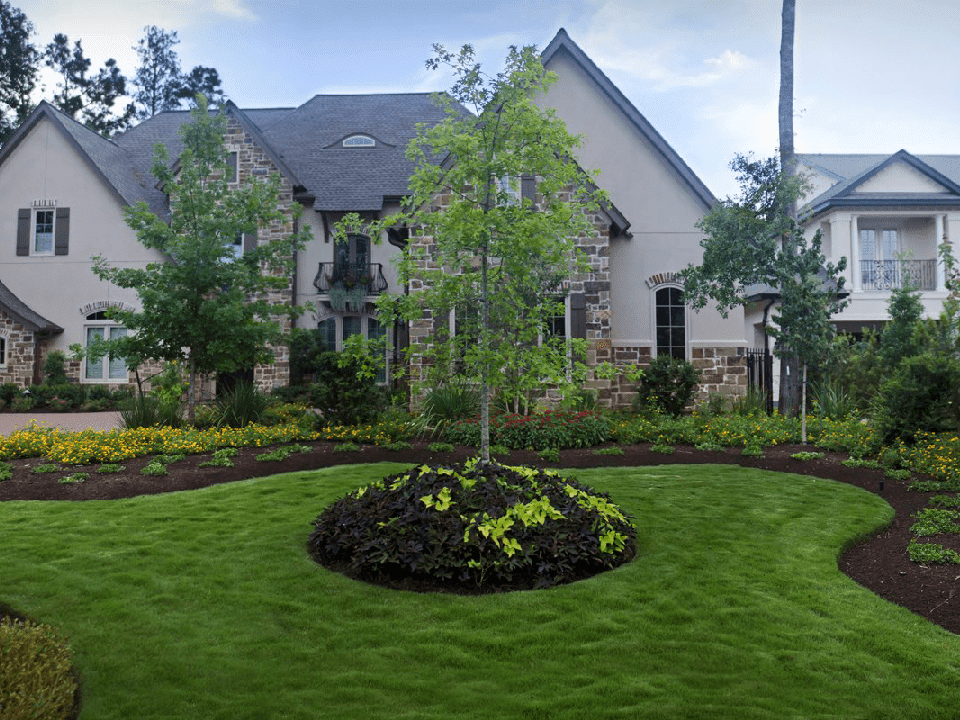The Facts About Hilton Head Landscapes Uncovered
The Facts About Hilton Head Landscapes Uncovered
Blog Article
More About Hilton Head Landscapes
Table of ContentsThe Best Strategy To Use For Hilton Head LandscapesHilton Head Landscapes for DummiesThe Single Strategy To Use For Hilton Head LandscapesThe Best Guide To Hilton Head LandscapesThe Hilton Head Landscapes DiariesThe Only Guide for Hilton Head LandscapesHilton Head Landscapes Can Be Fun For Everyone
Line creates all kinds and patterns and can be utilized in a selection of means in the landscape. Line in the landscape is developed by the edge between two products, the summary or silhouette of a form, or a lengthy direct function. Lines are a powerful device for the developer because they can be utilized to produce an infinite selection of shapes and kinds, and they manage activity of the eye and the body.

Lines can have several qualities, such as those described listed below, yet they commonly offer different functions. Figure 1. Lines in the landscape - bluffton landscaping. The residential or commercial properties of lines determine how people react to the landscape, both mentally and physically. Straight lines are architectural and powerful; they produce an official personality, are generally associated with a symmetrical layout, and lead the eye straight to a focal factor.
The Main Principles Of Hilton Head Landscapes
Straight lines are usually found in hardscape edges and material. Curved lines develop an informal, natural, relaxed personality that is connected much more with nature and unbalanced balance. Bent lines move the eye at a slower rate and include secret to the room by creating surprise sights. Upright lines move the eye up, making a space feel larger.
Upright lines in the landscape consist of tall, slim plant product, such as trees, or tall structures, such as an arbor or a bird home on a pole. Horizontal lines move the eye along the ground aircraft and can make a room really feel larger. Reduced lines are a lot more restrained and produce a sensation of remainder or repose.
The Definitive Guide to Hilton Head Landscapes
Low lines are produced by low yard walls, sidewalks, and short hedges. Lines are made use of to draw forms on a strategy. In plan sight, they define plant beds and hardscape locations. Lines are also developed by the vertical types of constructed functions and plant product. There are 3 primary line kinds that develop kind in the landscape: bedlines, hardscape lines, and plant lines.
Bedlines attach plant material to your home and hardscape because the eye adheres to the line, moving the stare through the landscape. Hardscape lines are developed by the edge of the hardscape, which defines the built structure. Line can additionally be created by long and slim products, such as a fence or wall surface.
Some Of Hilton Head Landscapes
Type is discovered in both hardscape and plants, and it is usually the leading visual aspect that spatially organizes the landscape and usually identifies the style of the yard. The form of structures, plant beds, and yard accessories also determines the total kind motif of the garden. Formal, geometric types consist of circles, squares, and polygons.
Plants develop kind in the yard via their lays out or silhouettes, but kind can additionally be specified by a space or adverse area in between plants - Landscaping bluffton sc (https://scriaoll-troos-gaerk.yolasite.com). Circles can be cycles, or they can be split into half circles or circle sectors and incorporated with lines to produce arcs and tangents
10 Simple Techniques For Hilton Head Landscapes
Circles can likewise be extended into ovals and ellipses for more range and interest. Circles are a strong design type because the eye is always attracted to the center, which can be utilized to emphasize a prime focus or link other types. Number 2. Circular types in hardscape and lawn panels.
The square form can additionally be segmented and previously owned consistently to create a grid pattern. Unlike circles, squares are stronger on the brink, which can be aligned or overlapped to create distinct patterns and more complicated kinds. Polygons are many-sided types with straight edges. Triangulars, for instance, are three-sided polygons.
Meandering lines commonly mimic the all-natural course of rivers or streams and can be referred to as smooth lines with deeply rounded wavinesses. Twisting lines (Figure 3) work well for pathways, plant bedlines, and dry stream beds. Twisting lines can add passion and mystery to a garden by leading viewers around corners to discover brand-new views and spaces.
The Main Principles Of Hilton Head Landscapes

Typical plant forms are well established and standardized, as type is the most constant and identifiable characteristic of plants. Type can likewise be created with the massing of plants, where the Resources overall mass creates a different type than an individual plant.
A highly contrasting kind needs to be utilized with careone or 2 work well as a centerpiece, however also numerous wreak havoc. Natural plant types, rather than over-trimmed types, must establish the mass of the composition. The importance of general kind is basically reliant on the viewing perspectivethe type of a tree can show up rather various to a person standing under the cover versus seeing the tree from a range in an open field.
Hilton Head Landscapes - Truths
Plant types additionally create and define deep space or open areas between the plants, producing either convex or concave forms in deep spaces. High-arching tree branches commonly create a concave open space under the branches, and a round cover with low branches loads the area to produce a convex type outdoors room under the tree.

Report this page